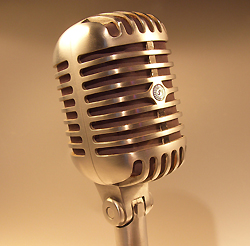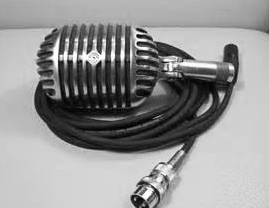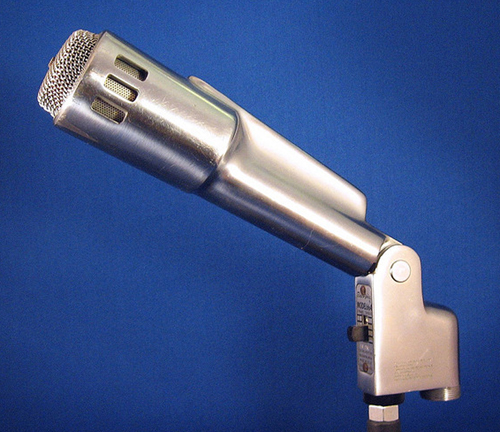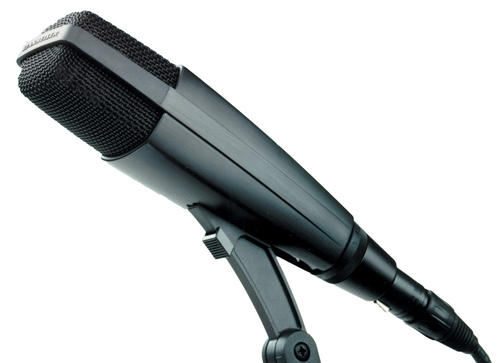
In the 1940s, RCA would introduce the classic model 77D, an Art Deco beauty with adjustable pattern control.
A tube connected the ribbon to the labyrinth in the mic’s body and the tube had an adjustable shutter that could be adjusted by the user that closed off portions of the tube openings allowing patterns control from omnidirectional to bi-directional (figure 8).
In the mid-1920s, Sidney Shure founded a radio parts supplier in Chicago named the Shure Radio Company, later changed to Shure Brothers when Sidney’s brother Samuel came onboard.
By 1932, the company was producing microphones to fill a rapidly growing market, and debuted the model 33N, a 2-button carbon microphone model that was the first lightweight, high-performance product in a field largely dominated by bulky units.
Shure went on to release the iconic model 55 in 1939, the first single-element unidirectional mic. The design is called UNIDYNE (short for “unidirectional dynamic”) and it revolutionized the field.
Before the 55, attaining anything other than an omnidirectional pattern meant using more than one diaphragm and combining their outputs, which resulted in a large mic head that usually didn’t sound all that good because the elements were spaced apart and usually had different frequency responses.
Shure solved this by using small ports that allowed sound waves to reach both sides of the diaphragm at different times, resulting in a more linear frequency response compared to using different diaphragms.
And to reduce handling noise, the capsule was suspended on springs dampened with foam to isolate the diaphragm from vibrations. Because the design only required a single diaphragm, the mic became smaller and less expensive. Factor in the timeless aesthetic design of the housing, and it’s no wonder that the 55 is still a popular model after all these years, with the current Shure catalog offering two updated models.
About 100 miles to the east in South Bend, Indiana, Al Kahn and Lou Burroughs converted their business from servicing radios to developing mics, and in 1930 incorporated under the name Electro-Voice. By the mid-1930s the company was up and rolling, producing a steady stream of innovations.
In 1934, while going through some old technical journals, Kahn came upon what he called “an ancient watt meter – patented in 1892 or thereabouts” which had a balanced winding to cancel hum from the stray 60 Hz fields that the watt meter might pick up.
As Kahn described it, “A little light bulb went off above my head, and I rushed back…got some tin snips, cut some laminations out, and I made a transformer and put it in and it worked.” Thus, the humbucking coil was born, and solved a major problem for mic users.
The company moved to larger facilities in nearby Buchanan, MI, and also diversified its product offerings into loudspeakers, phono cartridges, and consumer electronics. Still, mic work continued, with the model 664, a.k.a., “The Buchanan Hammer,” hitting the market in the mid-1950s. The nickname derived from legendary durability, but the single-element cardioid, dynamic type mic was also the first model to incorporate the company’s patented Variable-D (Variable Distance) design still found in several EV mics to this day, including the RE20 and the recently introduced RE320. Variable-D uses multiple rear and side ports to achieve pattern control.
Further Choices
Dr. Fritz Sennheiser founded Laboratorium Wennebostel in Germany in 1945 and started producing mics the next year. Later the company would change its name to Sennheiser, and by 1960 produced one of the most enduring models in pro audio, the MD-421.
While it currently sports a glass composite body, the original 421 body was made of DuPont’s Delrin polymer resin, one of the first mics to feature a molded body. The MD-421 also offers a user-adjustable bass roll-off filter, and is still extremely popular with live and studio engineers.



